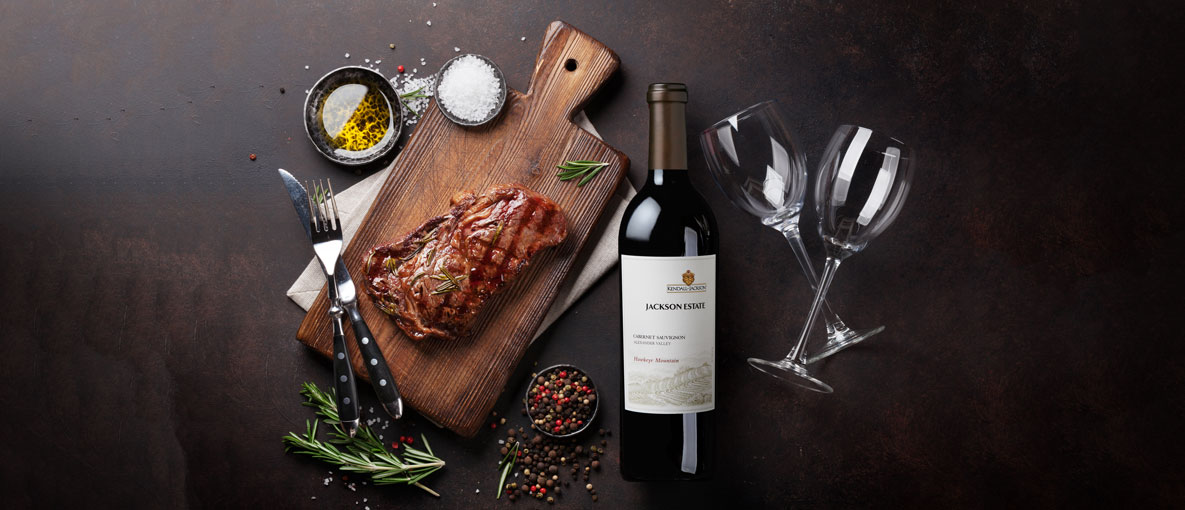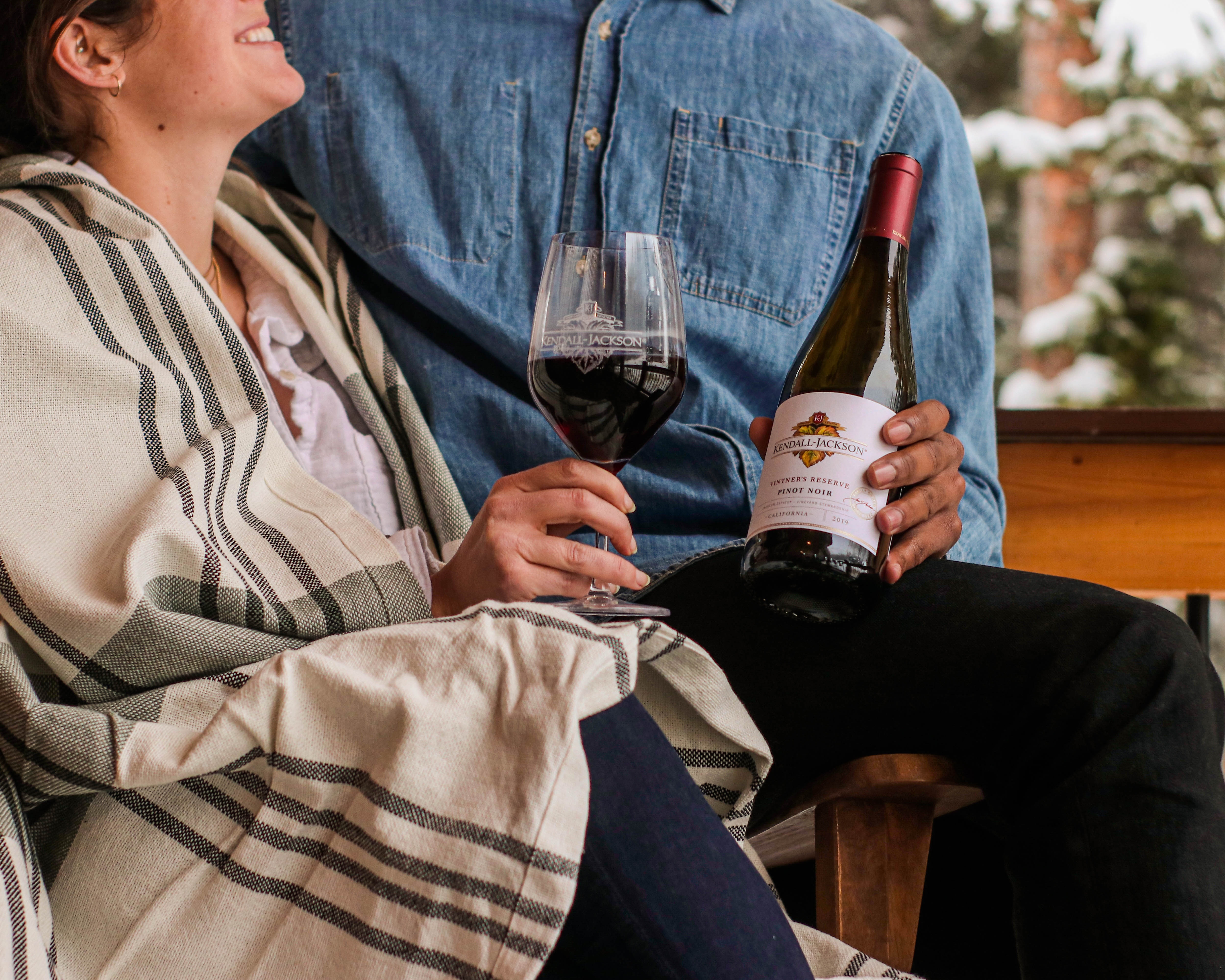Your Premier Guide to Types of Wine Glasses
How much do wine glasses matter? They matter a lot. That’s why we’re offering this “Premier Guide to Types of Wine Glasses.” Wine glass shapes and sizes absolutely make a difference in how we experience wines. The differences between red and white wine glasses, as well as sweet wine glasses and sparkling wine glasses, have significant effects.
Quantity Matters
Wine tasting and wine drinking glasses don’t necessarily have to be the same. In fact, they usually are not. Professional wine tasting glasses tend to be smaller. You only need one to two ounces to “evaluate” a wine professionally. However, most of us would like a bigger pour of four to five ounces to sip with our dinners.
When a sommelier asks you to “check” a wine before s/he pours it for the table, it’s only an ounce or so. That small quantity in a larger, elegant glass at a nice restaurant may make it a bit harder to evaluate the wine because it can be hard to sniff that small quantity of wine in a glass designed to showcase a larger volume. However, wines that are out of condition will show their state in just about any quantity poured. If you’re not sure your wine is showing properly, just ask for a few more drops!
What Is Proper Tasting Glassware? How Do Wine Glass Shapes Change Wines?
So, we come back to the - potentially budget-crushing - question of which glasses to set on our tables. Is it possible that specific types of wine glasses are not just a wine snob gimmick? That is a fair question, especially as the world’s snobbiest sommeliers used to taste wines out of metal “taste-vins” (basically translating into wine tasting cups). They were traditionally made of silver or silver-plated metal. Why aren’t we all drinking from tastevins?
A Brief History of the Tastevin for Wine Tasting
The truth is that, while lovely to look at and fun to collect, tastevins are terrible for both evaluating and enjoying wines. What happens when an acid liquid merges with metal? The two produce salt and hydrogen gas. Delicious? Unlikely. In all fairness, that effect takes longer to produce than it takes to briefly pour then taste a wine.
Nonetheless, a metal tastevin is not only potentially not ideal for the taste of wine, it confuses its color, too. Depending on how the tastevin is grooved, it may show a wine to be more ruby or more blue in hue. While color is not an indicator of quality (though some have personal preferences for darker- or lighter-colored wines), it does give an indication as to a wine’s age and typicity.
In fairness, however, one of the reasons for a tastevin’s creation was its use in candlelit cellars before the advent of electricity. Metal reflects color; glass doesn’t. Regardless, its use today - and for a long while now - is obsolete.
Types of Wine Tasting Glasses Today
At Kendall-Jackson, the wine glass of choice is a red wine, “Bordeaux-shaped” glass. Kendall-Jackson uses two slightly different glasses – depending on where you join them for a tasting, but both are in the same vein of style. In wine community lingo, these kinds of glasses are often referred to as “universal” glasses. That means that most wines “show”, or taste nicely, in this glass shape. This is especially true of wines that are either young or rather boldly flavored.
Still, wine folks love precision and there are certain wine glass shapes that are more becoming to different wine styles. As a general principal, the more delicate and aromatic the wine, the smaller in either dimension and/or in height the glass should be. However, it is entirely possible for big-shouldered, line-backer sorts of red wines to get lost in the visually gorgeous but overly enormous wine glasses that have been trendy for the last 10-15 years. Some of those glasses can hold almost an entire bottle of wine! Let’s dive into the main types of wine glasses being used today to better understand how they shape our tasting experiences.

Understanding the Different Types of Wine Glasses
The shape of your wine glass plays a surprising role in your tasting experience. Wine glasses are designed to capture and accentuate the unique characteristics of different wine styles. Let's explore the most common types and how they elevate your enjoyment:
Types of Red Wine Glasses:
Bordeaux Glass
- Characteristics: Tall and slender with a rounded bowl.
- Benefits: The larger bowl allows for ample aeration, essential for red wines like Cabernet Sauvignon, Merlot, and Carmenere. This "breathing" releases the bolder aromas and flavors locked within, showcasing the full complexity of the wine. The narrower rim focuses the aromas towards your nose, allowing for a more concentrated first impression.
Burgundy Glass
- Characteristics: Wider bowl than a Bordeaux glass, with a slightly larger opening.
- Benefits: Pinot Noir and Gamay wines are known for their delicate fruit characteristics and earthy notes. The Burgundy glass, with its wider bowl, allows these nuanced aromas to develop and be appreciated. The slightly larger opening compared to a Bordeaux glass ensures a more balanced delivery of aromas and flavors on the palate.
Types of White Wine Glasses:
Chardonnay Glass
- Characteristics: This versatile glass features a rounded bowl that's slightly wider than a Sauvignon Blanc glass.
- Benefits: Chardonnay can be vinified in a variety of styles, ranging from unoaked and crisp to rich and buttery. The Chardonnay glass is designed to accommodate this versatility. It allows unoaked Chardonnay to retain its bright, citrusy aromas while providing enough space for the richer, oaked styles to breathe and develop their toasty characteristics.
Sauvignon Blanc Glass
- Characteristics: Smaller and more U-shaped than a Chardonnay glass, with a narrower opening.
- Benefits: Sauvignon Blanc and other crisp white wines like Pinot Grigio are known for their vibrant acidity and lighter aromas. The Sauvignon Blanc glass' narrower design helps retain these delicate characteristics, preventing them from becoming overly muted. The smaller bowl keeps the wine cooler, further accentuating the refreshing acidity.
Types of Sparkling Wine Glasses:
Champagne Flute
- Characteristics: Tall and slender with a fluted shape.
- Benefits: The Champagne flute is the classic choice for Champagne, Prosecco, and other sparkling wines. The tall, narrow design helps maintain the effervescence, keeping the bubbles lively and preventing them from dissipating too quickly. It also directs the bubbles upwards, creating a visually appealing stream as you enjoy the wine.
Coupe Glass
- Characteristics: A shallow, wide-mouthed bowl on a stem.
- Benefits: While the coupe glass was once the preferred vessel for Champagne, it has fallen out of favor in recent years. The wide opening allows the bubbles to escape more quickly, diminishing the effervescent experience. However, some still enjoy the coupe glass for its vintage aesthetic, particularly for sweeter sparkling wines.
Types of Dessert Wine Glasses:
Port Glass
- Characteristics: Smaller than a red wine glass, with a bulbous bowl that tapers towards the rim.
- Benefits: Port and other fortified wines are known for their intense sweetness and rich aromas. The smaller bowl of the Port glass concentrates these aromas, allowing them to be fully appreciated. The tapered rim helps to focus the sweetness on the tip of the tongue, creating a more balanced tasting experience.
Sherry Copita
- Characteristics: A small, delicate glass with a long stem and a tulip-shaped bowl.
- Benefits: Similar to the Port glass, the Sherry copita's design concentrates the aromas of delicate Sherry and other fortified wines. The long stem helps to maintain the proper serving temperature, as Sherry is typically enjoyed slightly chilled.
Types of Specialty Wine Glasses:
Universal Wine Glasses
These versatile glasses feature a bowl size and shape that can accommodate a variety of wine types. They're ideal for casual wine drinkers or those with limited storage space. While they won't necessarily enhance the specific characteristics of each wine as effectively as specialized glasses, they offer a practical solution for enjoying a range of wines.
Stemless Wine Glasses
A modern take on the traditional wine glass, featuring a bowl similar to other types but lacking a stem. Stemless glasses are a great option for a more relaxed setting, poolside gatherings, or situations where there's a risk of knocking over stemmed glasses.
The Basic Components of a Wine Glass
When it comes to understanding wine glasses, paying attention to their components can greatly enhance your drinking experience. Here’s a closer look at the fundamental parts that make up a wine glass.
Stems
There are a few basics to adhere to, regardless the line of glasses you choose. Save for backyard barbecues, picnics and poolside scenarios (glass-sensitive areas where wine consumption vessels may be placed on precarious ledges or be constantly juggled during a stand-up meal), choose stems over stemless glasses. While neat freaks will appreciate that stems allow us to hold a glass without planting our fingerprints all over the bowl, the primary reason for stems is to keep our warms hands from heating up the bowls of the glasses and the wines in them.
Clear, Seamless Surface Glasses
Clear, non-etched glasses allow imbibers to see the wine more clearly. Those glasses change the appearance of wine color like tastevins do, though in a far less distorted way. Still, there is no doubting the charm of serving lovely wines in your great-grandmother’s ruby-tinted, etched crystal goblets, even if those aren’t the best for your painstakingly chosen wine.
Bowl-Shaped Glasses
It’s all about the swirl! If you can execute a successful wine swirl in a bellied, bowl-shaped glass, it’s akin to creating the Higgs-Boson particle smash. Aromas blast out of the glass in an exuberant expression of freedom. However, be careful trying this with your antique, etched and often flute-shaped Waterford-esque wine glasses. Otherwise, you may free the wine… onto Granny’s favorite tablecloth. Unless it is symbolic, stick with glasses that have a round “bowl” suitable for aeration, or swirling wine, to infuse oxygen into your chosen liquid to make aroma particles erupt and create a more dynamic “nose” on your wines. When looking at glasses for red wines versus white wines, reds tend to work better in larger glasses than whites.
Thin Lips
Unlike human lips, wine glass lips – or rims – are best thin. It may seem unimportant in theory, but it makes a big difference in practice. There is a “je ne sais quoi” about how quickly and elegantly a wine strikes the palate. If you are skeptical, just try sipping a wine from your fanciest wine glass, then your biggest coffee mug. Best rule of thumb — keep your wine glass rims skinny.
Glass Versus Crystal Wine Glasses
Lots of people will tell you crystal outperforms glass. However, any thin-lipped and inward-curving glass at the rim will work well. So, while crystal definitely feels lighter, and hence more elegant, in the hand, glass can do the same job. Moreover, glass if far sturdier. If you have a granite countertop, glass survives the impact of an unintentional hard landing better. Glass also doesn’t shatter as easily in the face of high-impact water sloshing when you want to get your glasses spic-n-span clean (and not spend hours washing and hand-drying them).
What Wine Glass Should I Choose?
I once dated a gentleman studying for the Master Sommelier exam while I was studying for the Master of Wine exam. He came back from the Dollar Store one Sunday afternoon with a few twelve-packs of $0.99 glasses. They were perfect glasses for wine tasting as well as big enough glasses for elegant wine drinking. What luck!
There are loads of wine glass brands to choose from: Zalto, Riedel, Stolzle and Schott Zwiesel are just a few. But, you can use good judgment and look for a nicely bellied, thin-lipped, slightly curved-in-at-the-top glass and buy it at your local department or discount store. This type of wine glass works for any style of wine – white, red, Rosé, sparkling or sweet. Just remember that the more aromatic and delicate a wine is, the thinner the glass should be. Also, for sweet and fortified wines served in smaller portions, the same is true.
Knowing what parameters to judge by is everything. Whatever glass you choose, here is to happy sipping!

Make Every Wine Experience Memorable with Kendall-Jackson
In conclusion, the shape and style of wine glasses can significantly enhance your enjoyment of wine by affecting how aromas are perceived and flavors are delivered. Whether you prefer a Bordeaux glass for bold reds or a Chardonnay glass for crisp whites, choosing the right glassware enhances the entire wine-drinking experience.
Discover more with Kendall-Jackson, where we celebrate the art of winemaking and the joy of sharing exceptional wines with family and friends. Sign up for our newsletter to stay updated on new releases, special events, and exclusive offers. Visit our website to explore our diverse selection of wines and elevate your wine experience.
For more wine serving tips, visit the Entertaining section of our website.
Christy Canterbury is a Master of Wine, journalist, speaker and judge based in New York City. In 2014, she was short-listed for the Roederer Online Wine Communicator of the Year Award. Her work has been published in Decanter, Wine Enthusiast, Edible Green Mountains, Wine Searcher, Food Arts, Snooth, Beverage Media, TimAtkin.com, Civiltà del Bere, Wine Business Monthly, TASTED, Selectus Wines and in other outlets.



